
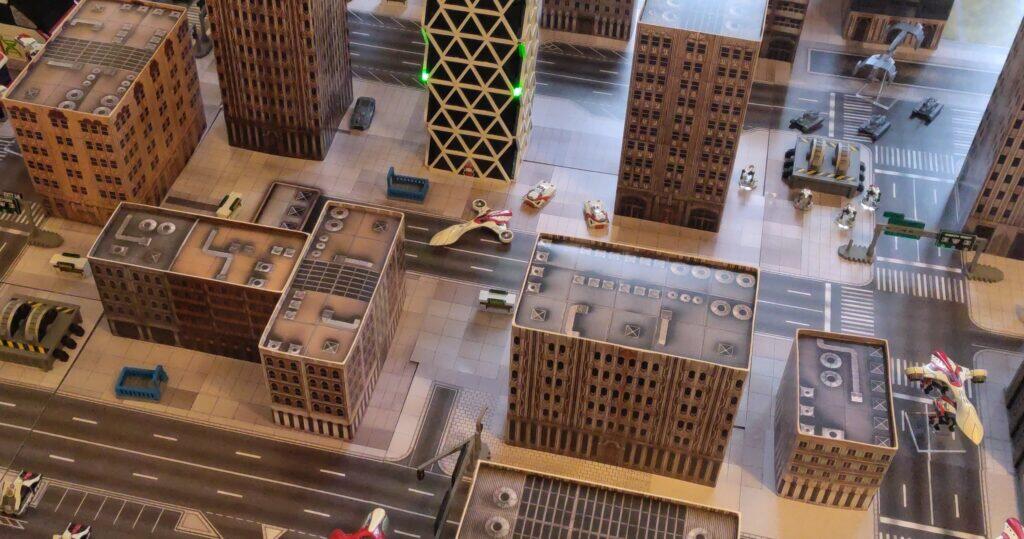
Nothing to see here.
At the 24 hour 2CV race on Anglesey TomB engineering and I got a chance to look at a Belgian 2CV hybrid race car being worked on in the pits.
There’s very little of an original A series left here: chassis, suspension and gearbox being the main components. The engine is a BMW 1100.


The bodywork barely resembled an A series but the door was from a Dyane and the gear lever was distinctly familiar.
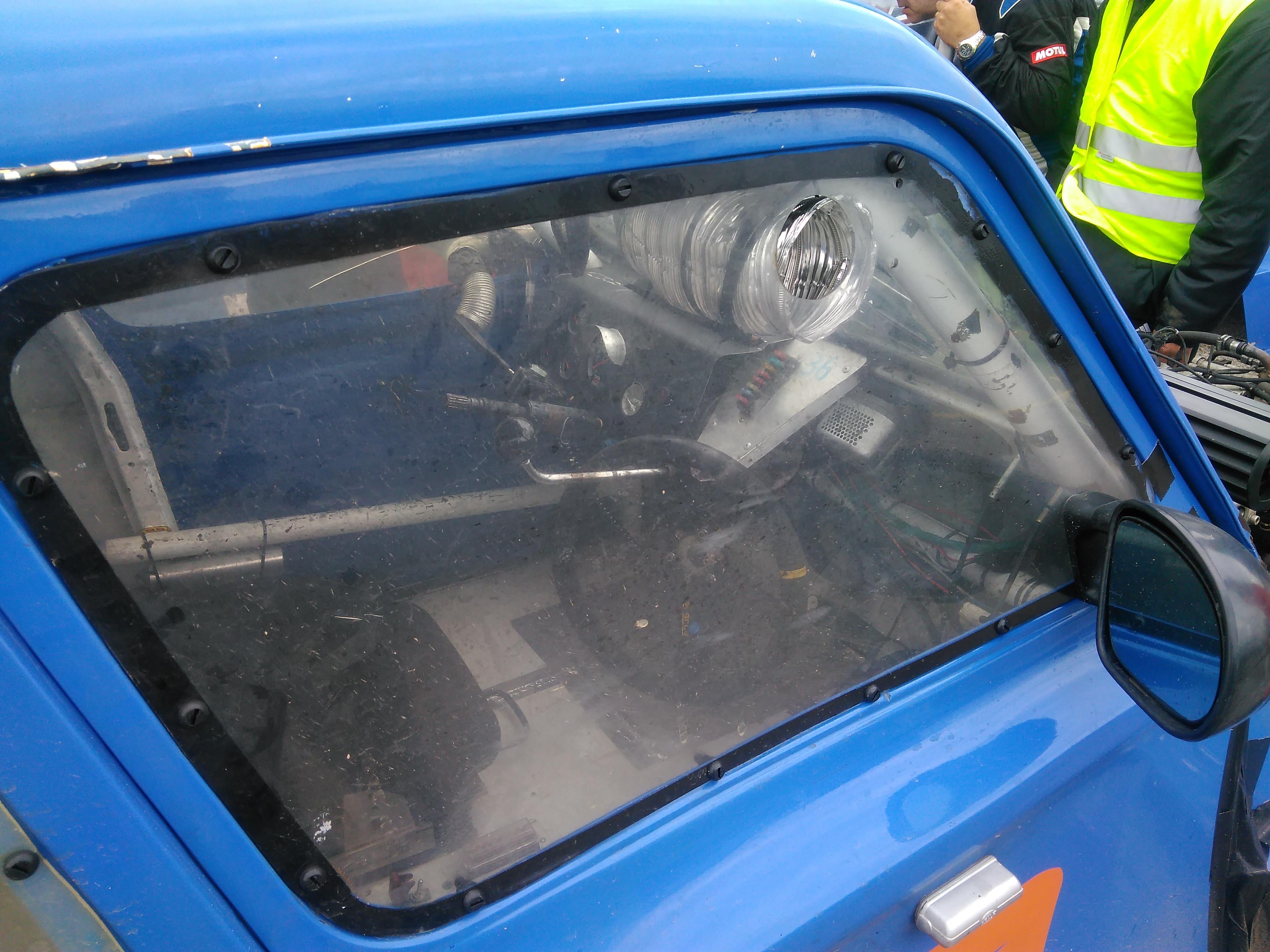
The Citroën flat air-cooled engines all seem to have gearboxes that can be mated to an A series engine. This means it’s theoretically practical to interchange gearboxes. However, before attempting this it’s worth knowing what ratios are in the different boxes.
* So I’ve read – I’ve not tried it.
This is a summary of the information I’ve been able to find about the different gearboxes and their ratios from a variety of sources. Where it’s been available to me I’ve take the information from Citroën workshop manuals, the rest is from various corners of the internet (mostly French Wikipedia 1,2,3) so…
This information is provided as-is with no guarantee of accuracy. Your mileage may vary, the value of investments may go up as well as down, the only certain things in life are death and taxes.
This is the engine that debuted with the 2CV in 1949 and powered the 2CV 4. I’ve not included details of the gearbox on these but there are quite a few listed in the workshop manual.
This is the base model, two cylinder, 602cc, engine that first appeared in 1961 in the 2CV 6. It is an evolution of the A series engine.
There seem to have been a variety of gearboxes for the different models produced (Mehari, vans, &c.) so to simplify things I’ve stuck with the post 1970 2CV 6 and Dyane 6 as they’re the most common.
Engine: M28/1, 602cc flat 2, 8.5:1 compression ratio.
Tyres: 125 R 15 X, 1.8000m rolling circumference under load.
| Gear | Gearbox ratio | Final drive | Overall ratio | Speed at 1000 rpm kph | Speed at 1000 rpm mph |
|---|---|---|---|---|---|
| 1st | 5.202 | 4.125 | 21.458 | 5.033 | 3.145 |
| 2nd | 2.656 | 4.125 | 10.956 | 9.857 | 6.160 |
| 3rd | 1.785 | 4.125 | 7.363 | 14.667 | 9.166 |
| 4th | 1.315 | 4.125 | 5.424 | 19.911 | 12.444 |
| Rev | 5.202 | 4.125 | 21.458 | 5.033 | 3.145 |
Speedometer drive ratio: 4/16
(& Ami 8?)
Engine: M28, 602cc flat 2, 9:1 compression ratio.
Tyres: 125 R 15 X, 1.8000m rolling circumference under load.
| Gear | Gearbox ratio | Final drive | Overall ratio | Speed at 1000 rpm kph | Speed at 1000 rpm mph |
|---|---|---|---|---|---|
| 1st | 5.748 | 3.875 | 22.275 | 4.848 | 3.03 |
| 2nd | 2.934 | 3.875 | 11.372 | 9.497 | 5.935 |
| 3rd | 1.923 | 3.875 | 7.451 | 14.816 | 9.26 |
| 4th | 1.350 | 3.875 | 5.231 | 20.646 | 12.903 |
| Rev | 5.748 | 3.875 | 22.275 | 4.848 | 3.03 |
Speedometer drive ratio: 4/16
Engine: R06/627 (re-badged M28), 602cc flat 2, 9:1 compression ratio.
Tyres: 135 SR 13 XZX, 1.670m rolling circumference under load.
| Gear | Gearbox ratio | Final drive | Overall ratio | Speed at 1000 rpm kph | Speed at 1000 rpm mph |
|---|---|---|---|---|---|
| 1st | 4.55 | 4.375 | 19.91 | 5.2 | 3.2 |
| 2nd | 2.5 | 4.375 | 10.94 | 9.5 | 5.9 |
| 3rd | 1.81 | 4.375 | 7.92 | 13.1 | 8.1 |
| 4th | 1.15 | 4.375 | 5.03 | 20.7 | 12.9 |
| Rev | 4.18 | 4.375 | 18.29 | ??? | ??? |
Normally referred to as the Visa engine, this is an evolution of the M28 A series engine with changes to the major components (crank case, crank, cylinders, heads, ignition).
Engine: V06/630, 652cc flat two, 9.1:1 compression ratio.
Tyres: 135 SR 13 XZX, 1.670m rolling circumference under load.
| Gear | Gearbox ratio | Final drive | Overall ratio | Speed at 1000 rpm kph | Speed at 1000 rpm mph |
|---|---|---|---|---|---|
| 1st | 4.545 | 4.125 | 18.749 | 5.344 | 3.321 |
| 2nd | 2.500 | 4.125 | 10.312 | 9.716 | 6.038 |
| 3rd | 1.642 | 4.125 | 6.776 | 14.784 | 11.674 |
| 4th | 1.147 | 4.125 | 4.731 | 21.176 | 13.160 |
| Rev | 4.181 | 4.125 | 17.249 | 5.808 | 3.609 |
Speedometer drive ratio: 5 X 12
Engine: V06/630, 652cc flat two, 9.5:1 compression ratio.
Not got information on the gearbox, presumably the same as the LNA with this engine?
Engine: V06/630, 652cc flat 2, 9.1:1 compression ratio.
Tyres: 135 SR 13 XZX , 1.670m rolling circumference under load.
| Gear | Gearbox ratio | Final drive | Overall ratio | Speed at 1000 rpm kph | Speed at 1000 rpm mph |
|---|---|---|---|---|---|
| 1st | 4.55 | 4.125 | 18.77 | 5.5 | 3.4 |
| 2nd | 2.5 | 4.125 | 18.77 | 10.1 | 6.3 |
| 3rd | 1.64 | 4.125 | 6.76 | 15.4 | 9.6 |
| 4th | 1.15 | 4.125 | 4.74 | 21.9 | 13.6 |
| Rev | 4.18 | 4.125 | 17.24 | ??? | ??? |
Engine: V06/644, 652cc flat 2, 9.5:1 compression ratio.
Tyres: 135 SR 13 XZX , 1.670m rolling circumference under load.
| Gear | Gearbox ratio | Final drive | Overall ratio | Speed at 1000 rpm kph | Speed at 1000 rpm mph |
|---|---|---|---|---|---|
| 1st | 4.55 | 3.889 | 17.70 | 5.5 | 3.4 |
| 2nd | 2.5 | 3.889 | 9.72 | 10.1 | 6.3 |
| 3rd | 1.64 | 3.889 | 6.38 | 15.4 | 9.6 |
| 4th | 1.15 | 3.889 | 4.47 | 21.9 | 13.6 |
| Rev | 4.18 | 3.889 | 16.25 | ??? | ??? |
This is the flat four engine that first appeared in the GS in 1970 and was the main engine in both the GS and Axel as well as powering the Ami Super.
I haven’t done all the cross-referencing required to match GS models to gearboxes but it looks like there were four and five speed gearboxes that came with either a 4.375 or a 4.125 final drive. (There was also a three speed automatic box but I’m not interested in that.)
The Axel was the final evolution of the Citroën flat air cooled engine and seems to have used the four and five speed boxes from the GS but with a final drive of 3.889 in both cases.
Engine: G10/612, 1015cc flat 4, 9:1 compression ratio.
Tyres: 135 SR 15 ZX, 1.821m rolling circumference under load. (?)
| Gear | Gearbox ratio | Final drive | Overall ratio | Speed at 1000 rpm kph | Speed at 1000 rpm mph |
|---|---|---|---|---|---|
| 1st | 3.818 | 4.125 | 15.75 | 7.2 | 4.5 |
| 2nd | 2.313 | 4.125 | 9.54 | 11.9 | 7.4 |
| 3rd | 1.524 | 4.125 | 6.29 | 18.1 | 11.2 |
| 4th | 1.12 | 4.125 | 4.62 | 24.6 | 15.3 |
| Rev | 4.182 | 4.125 | 17.25 | ??? | ??? |
Tyres: 145 SR 15 XZX, 1.873m rolling circumference under load.
| Gear | Gearbox ratio | Final drive | Overall ratio | Speed at 1000 rpm kph | Speed at 1000 rpm mph |
|---|---|---|---|---|---|
| 1st | 3.818 | 4.375 | 16.7 | 7 | 4.4 |
| 2nd | 2.313 | 4.375 | 10.12 | 11.5 | 7.1 |
| 3rd | 1.524 | 4.375 | 6.67 | 17.5 | 10.9 |
| 4th | 1.12 | 4.375 | 4.9 | 23.8 | 14.8 |
| Rev | 4.182 | 4.375 | 18.30 | ??? | ??? |
| Gear | Gearbox ratio | Final drive | Overall ratio | Speed at 1000 rpm kph | Speed at 1000 rpm mph |
|---|---|---|---|---|---|
| 1st | 3.818 | 4.125 | 15.75 | 7.4 | 4.6 |
| 2nd | 2.294 | 4.125 | 9.46 | 12.3 | 7.6 |
| 3rd | 1.5 | 4.125 | 6.19 | 18.9 | 11.7 |
| 4th | 1.031 | 4.125 | 4.25 | 27.4 | 17 |
Tyres: 145 SR 15 XZX, 1.873m rolling circumference under load.
| Gear | Gearbox ratio | Final drive | Overall ratio | Speed at 1000 rpm kph | Speed at 1000 rpm mph |
|---|---|---|---|---|---|
| 1st | 3.818 | 4.375 | 16.7 | 7 | 4.4 |
| 2nd | 2.294 | 4.375 | 10.04 | 11.6 | 7.2 |
| 3rd | 1.5 | 4.375 | 6.56 | 17.8 | 11.1 |
| 4th | 1.133 | 4.375 | 6.56 | 23.5 | 14.6 |
| 5th | 0.912 | 4.375 | 3.99 | 29.2 | 18.1 |
| Gear | Gearbox ratio | Final drive | Overall ratio | Speed at 1000 rpm kph | Speed at 1000 rpm mph |
|---|---|---|---|---|---|
| 1st | 3.818 | 4.125 | 15.75 | 7.4 | 4.6 |
| 2nd | 2.294 | 4.125 | 9.46 | 12.3 | 7.6 |
| 3rd | 1.5 | 4.125 | 6.19 | 18.9 | 11.7 |
| 4th | 1.133 | 4.125 | 4.67 | 25 | 15.5 |
| 5th | 0.912 | 4.125 | 3.76 | 31 | 19.3 |
Engine: G11/631 engine, 1129cc flat four, 9:1 compression ratio.
Tyres: 145 SR 15 XZX, 1.873m rolling circumference under load.
| Gear | Gearbox ratio | Final drive | Overall ratio | Speed at 1000 rpm kph | Speed at 1000 rpm mph |
|---|---|---|---|---|---|
| 1st | 3.818 | 3.889 | 14.85 | 7.2 | 4.5 |
| 2nd | 2.294 | 3.889 | 8.92 | 12 | 7.5 |
| 3rd | 1.5 | 3.889 | 5.83 | 18.4 | 11.4 |
| 4th | 1.031 | 3.889 | 4.01 | 26.7 | 16.6 |
Engine: T13/653, 1299cc flat four, 8.7:1 compression ratio.
Tyres: 160/65 R 340 TRX (???)
| Gear | Gearbox ratio | Final drive | Overall ratio | Speed at 1000 rpm kph | Speed at 1000 rpm mph |
|---|---|---|---|---|---|
| 1st | 3.818 | 3.889 | 14.85 | 7 | 4.4 |
| 2nd | 2.294 | 3.889 | 8.92 | 11.6 | 7.2 |
| 3rd | 1.5 | 3.889 | 5.83 | 17.7 | 11 |
| 4th | 1.133 | 3.889 | 4.41 | 23.5 | 14.6 |
| 5th | 0.912 | 3.889 | 3.55 | 29.1 | 18.1 |
The Solex 23/36 CISC carburettor was fitted to the 2CV, Dyane, Visa and LN(A). Leaving aside the 652cc engines, there were two models fitted to the 602cc engines and they differ in the sizes of the chokes.
Information on these in the Citroën workshop manuals is contained in a few cross referenced tables which are just about intelligible if you are looking for information on a specific car but make it very hard to come up with a simple guide. Not that I’m going to let that stop me – here’s my working overview of the main types of 23/36 carbs.
| Car | Reference | First choke venturi [mm] (area [mm^2]) | Second choke venturi [mm] (area [mm^2]) | First choke main jet | Second choke main jet | Idle jet | First choke air correction jet | Second choke air correction jet | Pump injector | Needle valve seat |
|---|---|---|---|---|---|---|---|---|---|---|
| 2CV/Dyane (1978-07) | 197 | 21 (1385) | 24 (1810) | 120 | 70 | 40 | 1 F 2 | 2 AA | 40 | 1.7 (Ball type) |
| 2CV/Dyane (1980-07)/LN | 225 | 18 (1018) | 26 (2124) | 102.5 | 87.5 | 39 | 1 F 2 | 2 AA | 45 | 1.7 (Ball type) |
| Visa/LNA | 209 | 21 (1385) | 26 (2124) | 125 | 130 | 41 | 120 | 160 | 40 | 170 (Ball type) |
Car: This is the car that used this carb, this is a rough guide – for more detailed information you’ll need to dig into the workshop manuals. Reference: The Solex reference that is supposedly on the carb, not found it on mine yet. However, the venturi sizes are moulded onto the bowl either side of the Solex logo and that’s how you can tell which model you have.
The 197 (21-24) carb is sometimes referred to as a “Dyane carb”, probably because it seems to have first appeared on the M28 engine used in the Dyane. However, both 2CVs and Dyanes had this carb and then the latter – and more common – 225 (18-26) carb.
As Judith is an original car, once the worn out parts are replaced there’s not going to be much to do. As a result a long term plan has been hatched to build myself a Burton to give myself an automotive toy to play with.
With this in mind an opportunity presented itself in the form of a spares-or-repair 2CV engine on fleaBay. I managed to pick it up with the opening bid as it was collection only. Fortunately it wasn’t too far from TomB engineering so he did the honours for me and reported back with some photos.
Given I’m planning on rebuilding the engine with a 652cc “big bore” kit it looks like a pretty solid foundation and having a rebuilt and bench tuned engine will open up my options when it comes to the time to find a donor car.
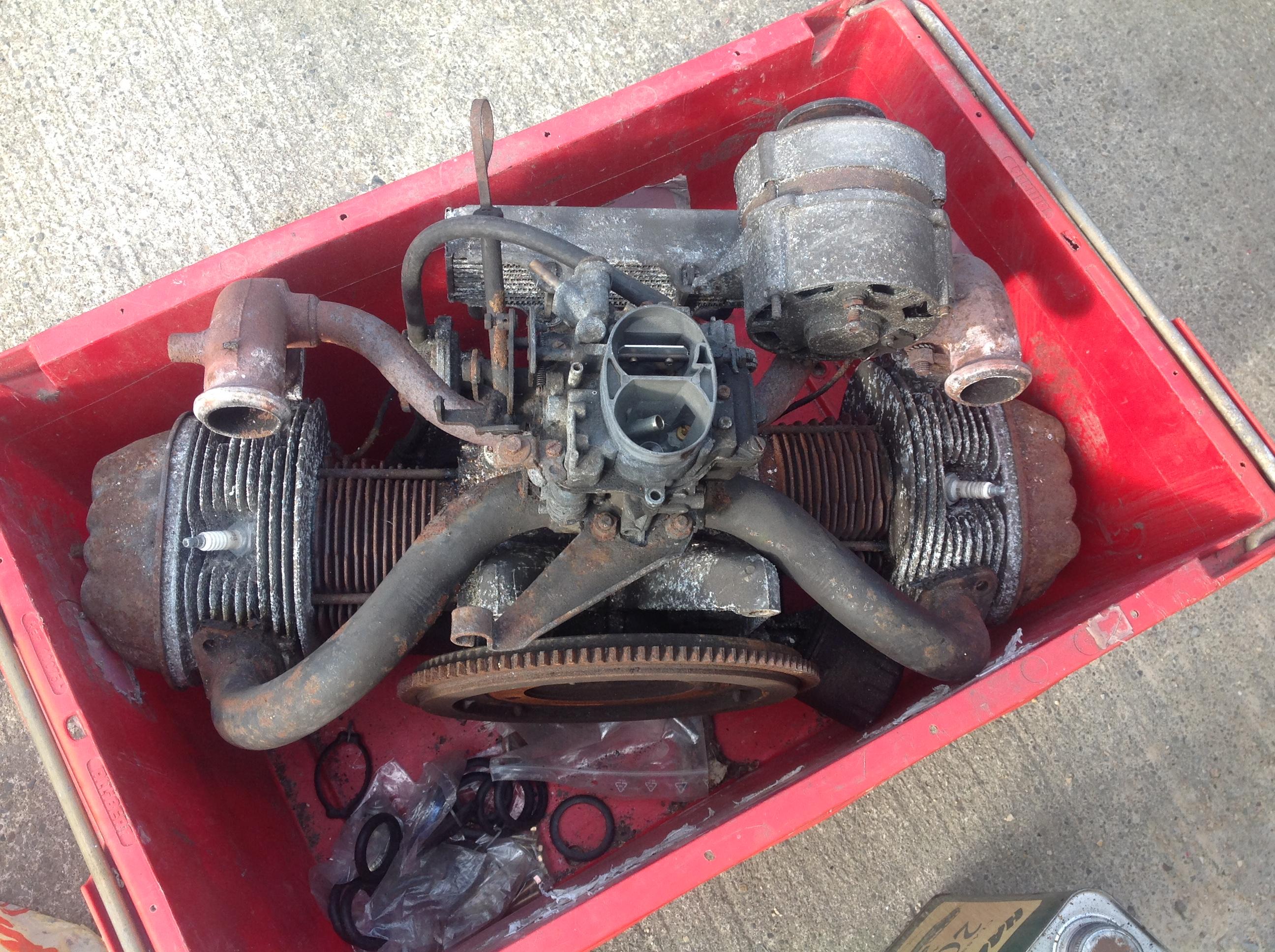

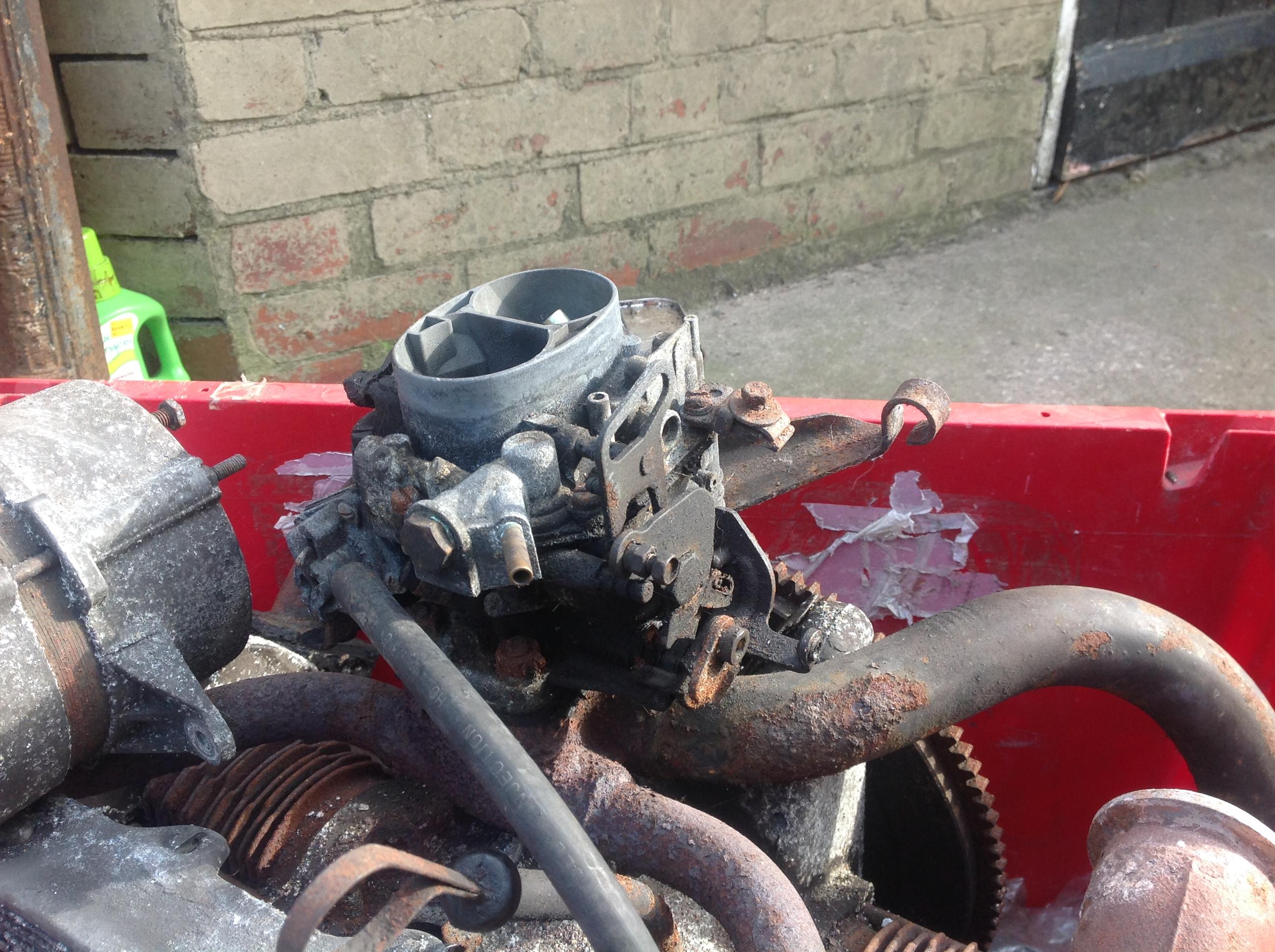
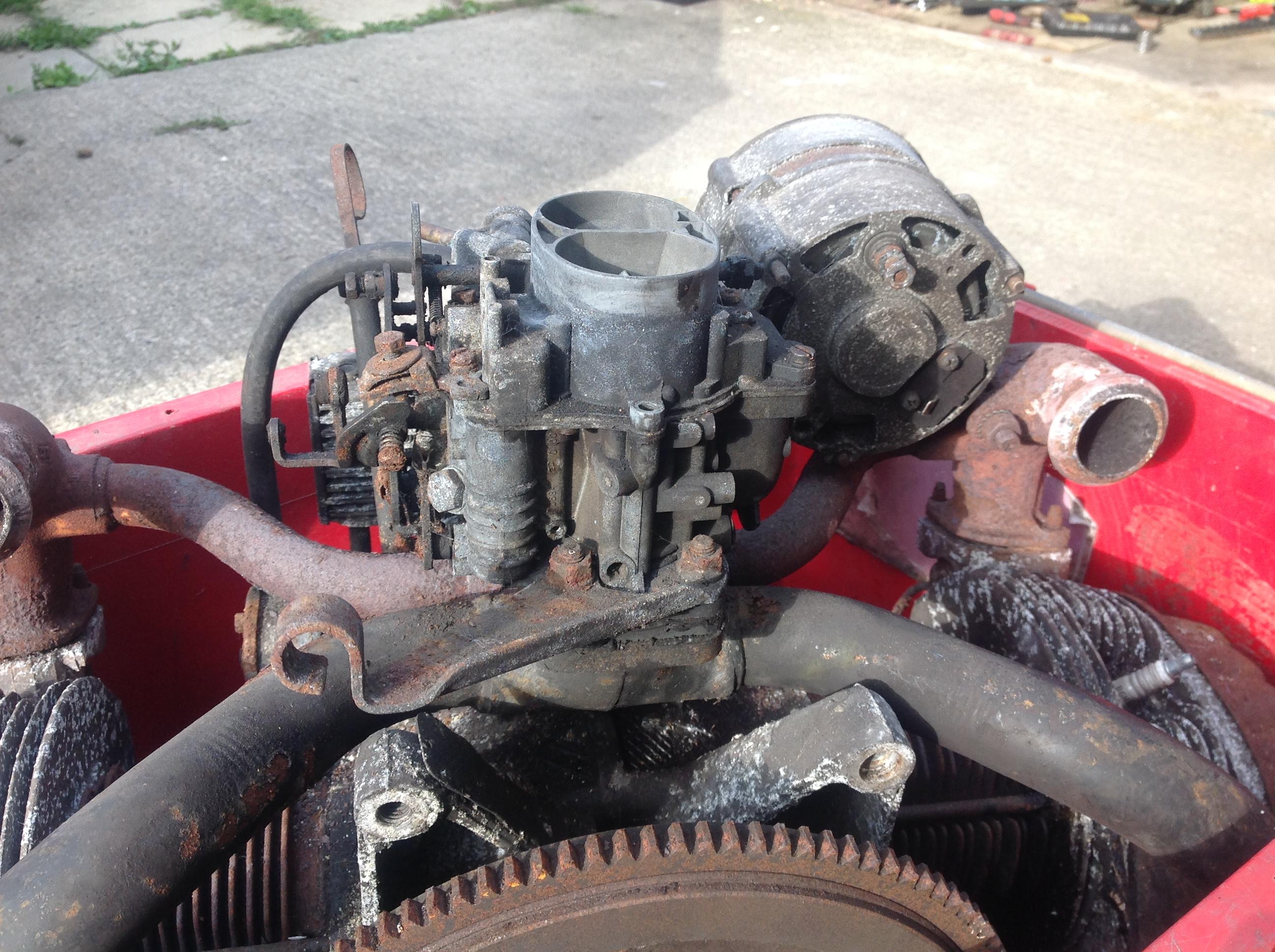
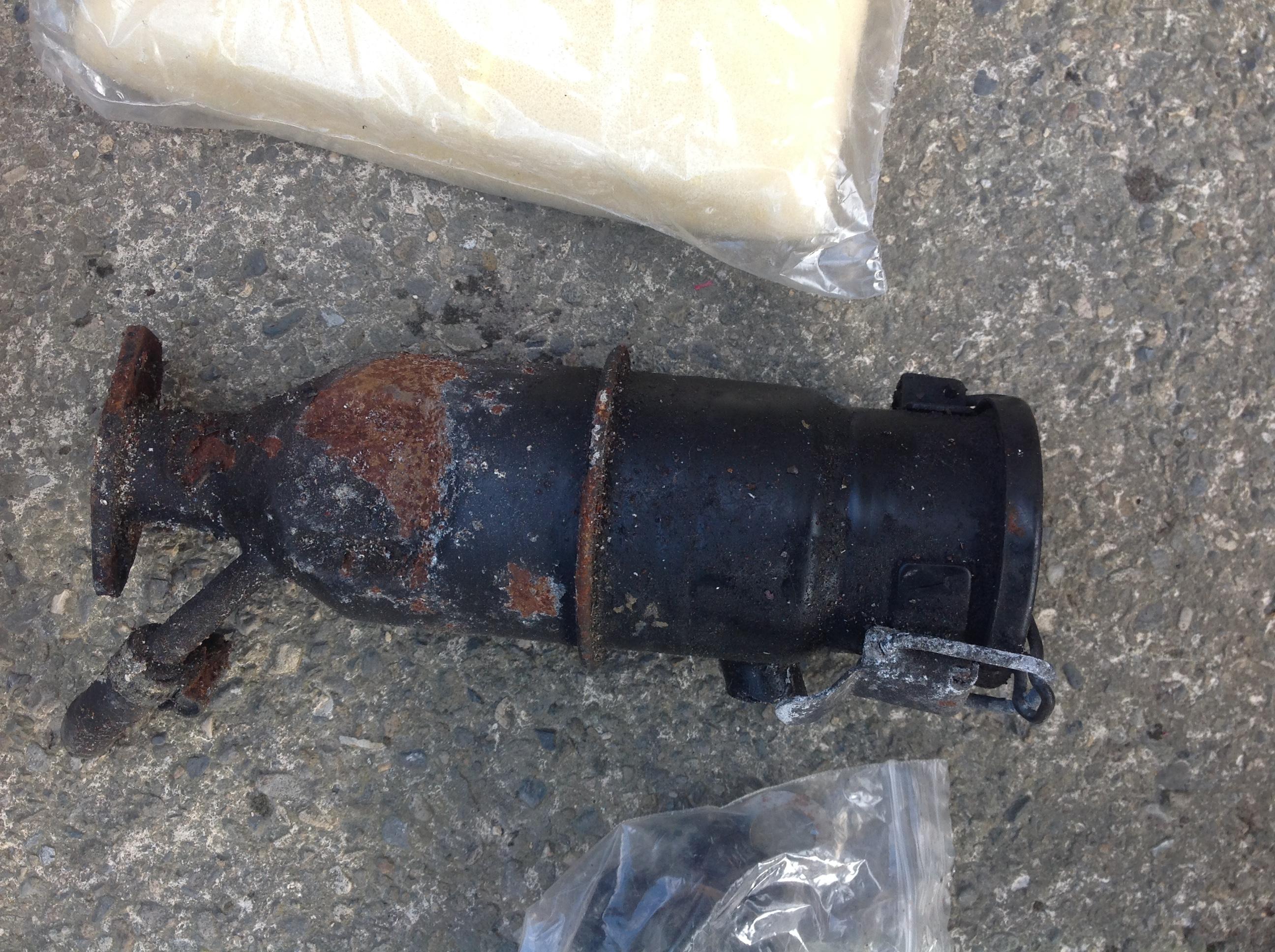
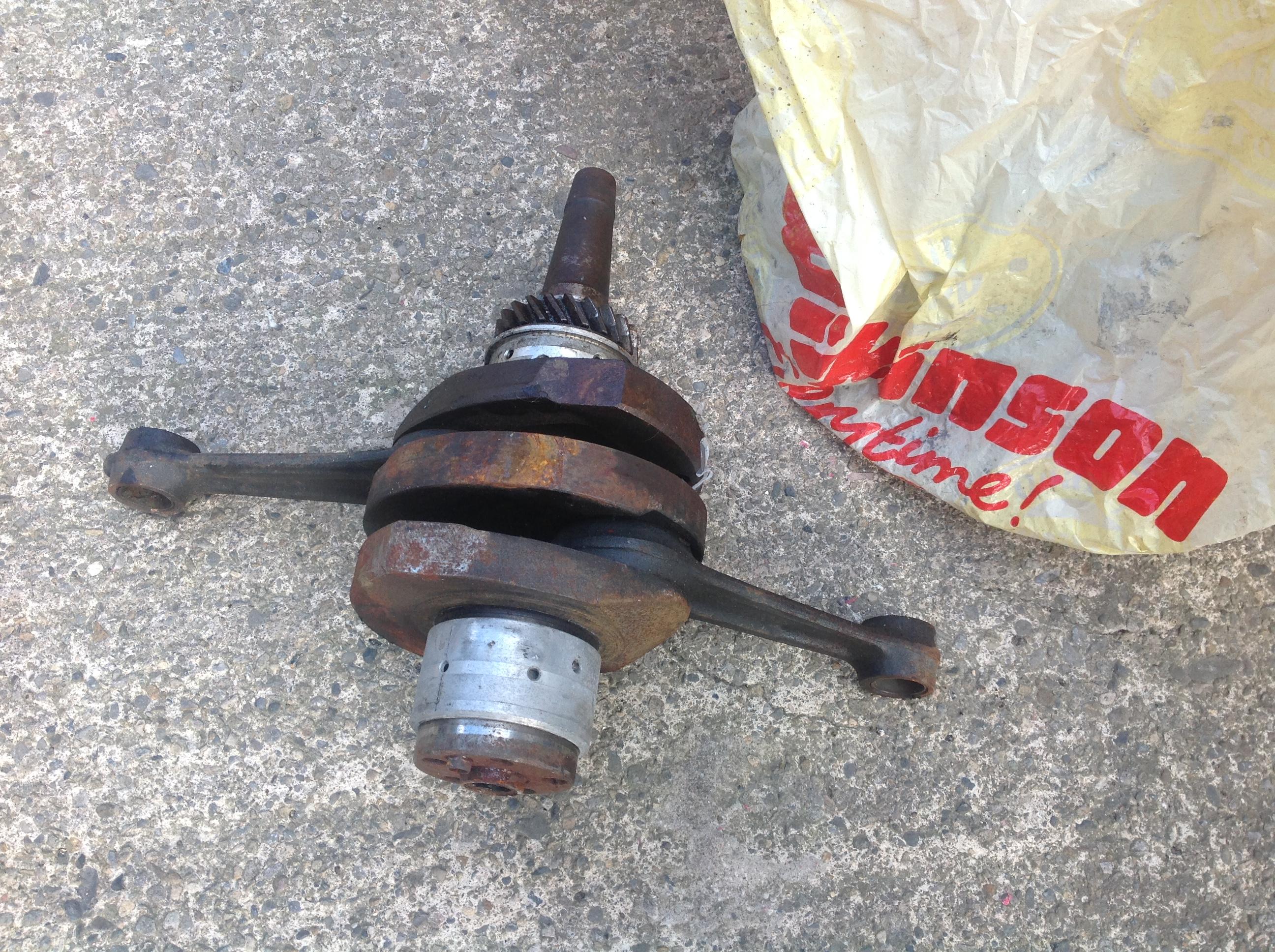
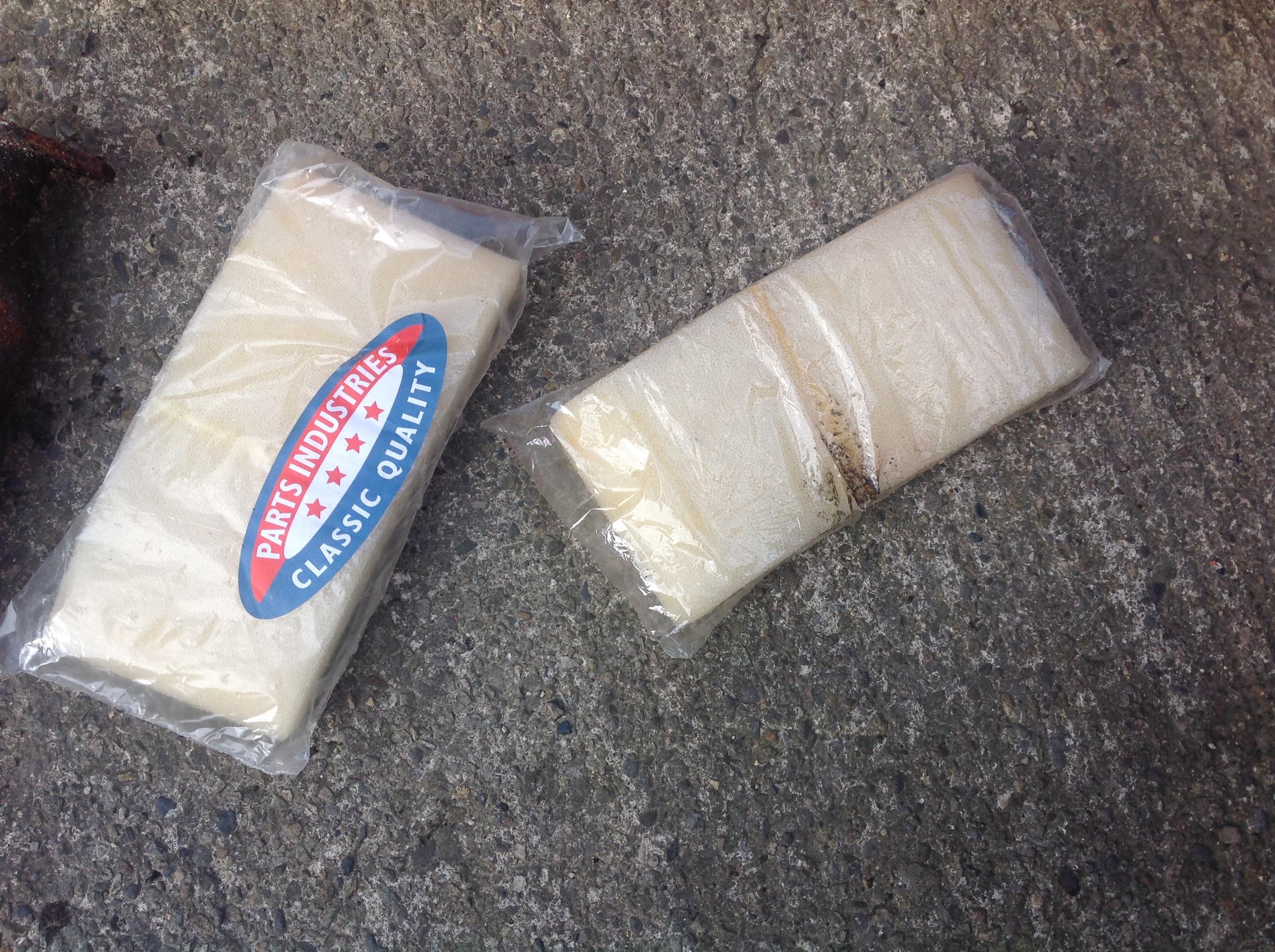
There weren’t any 2CVs competing at the Le Mans Classic but they were being used as VIP transports.
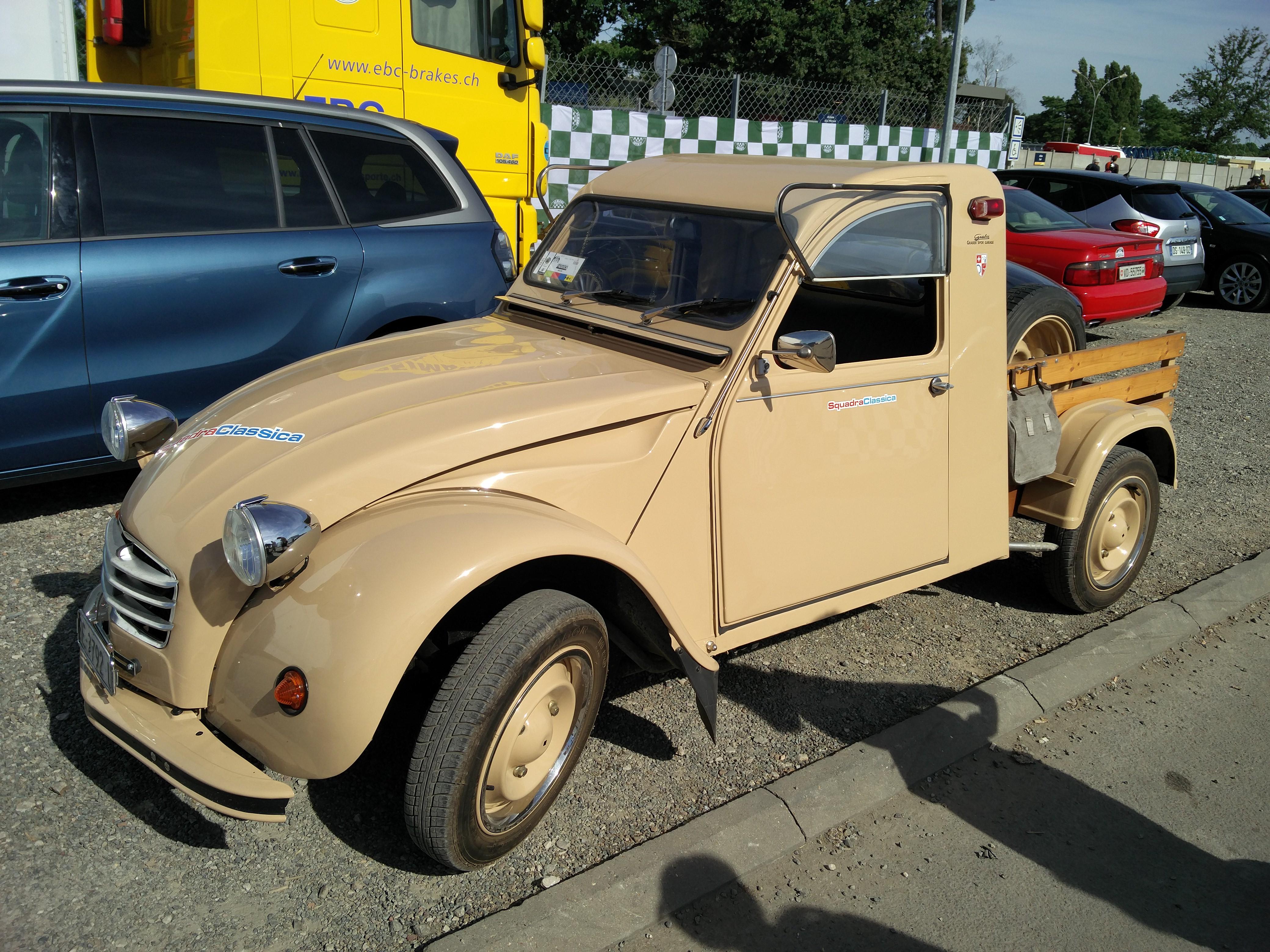
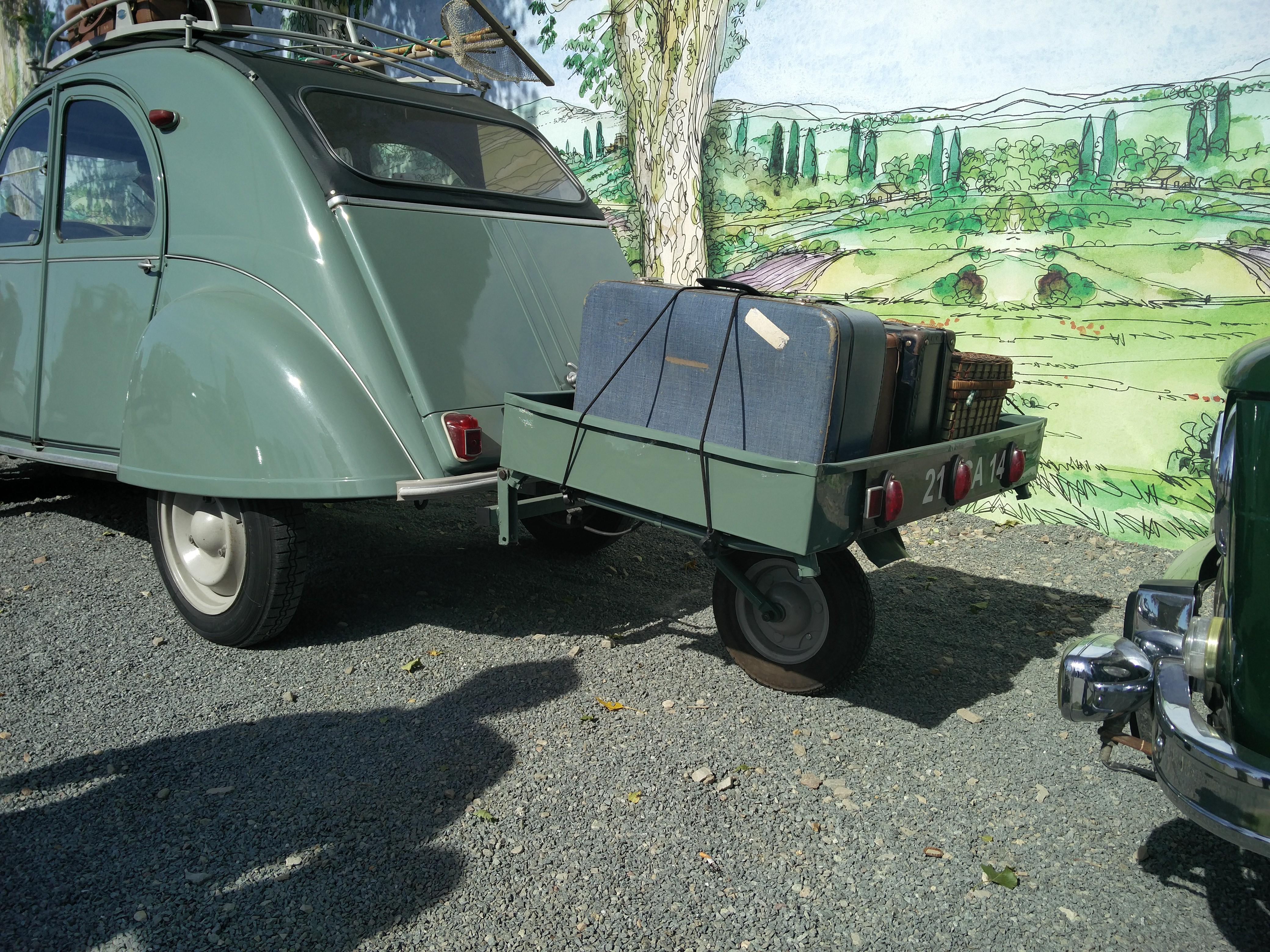

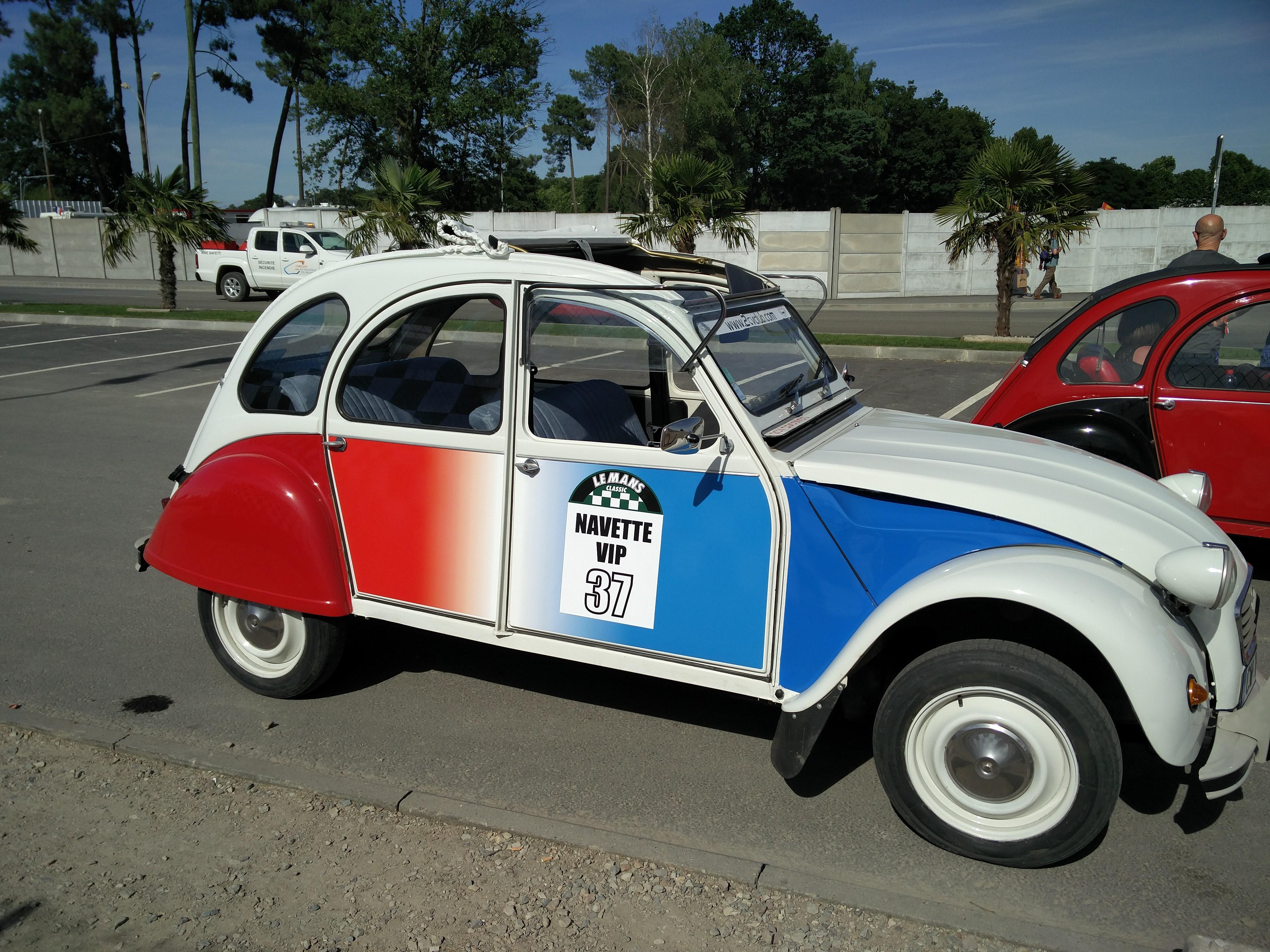
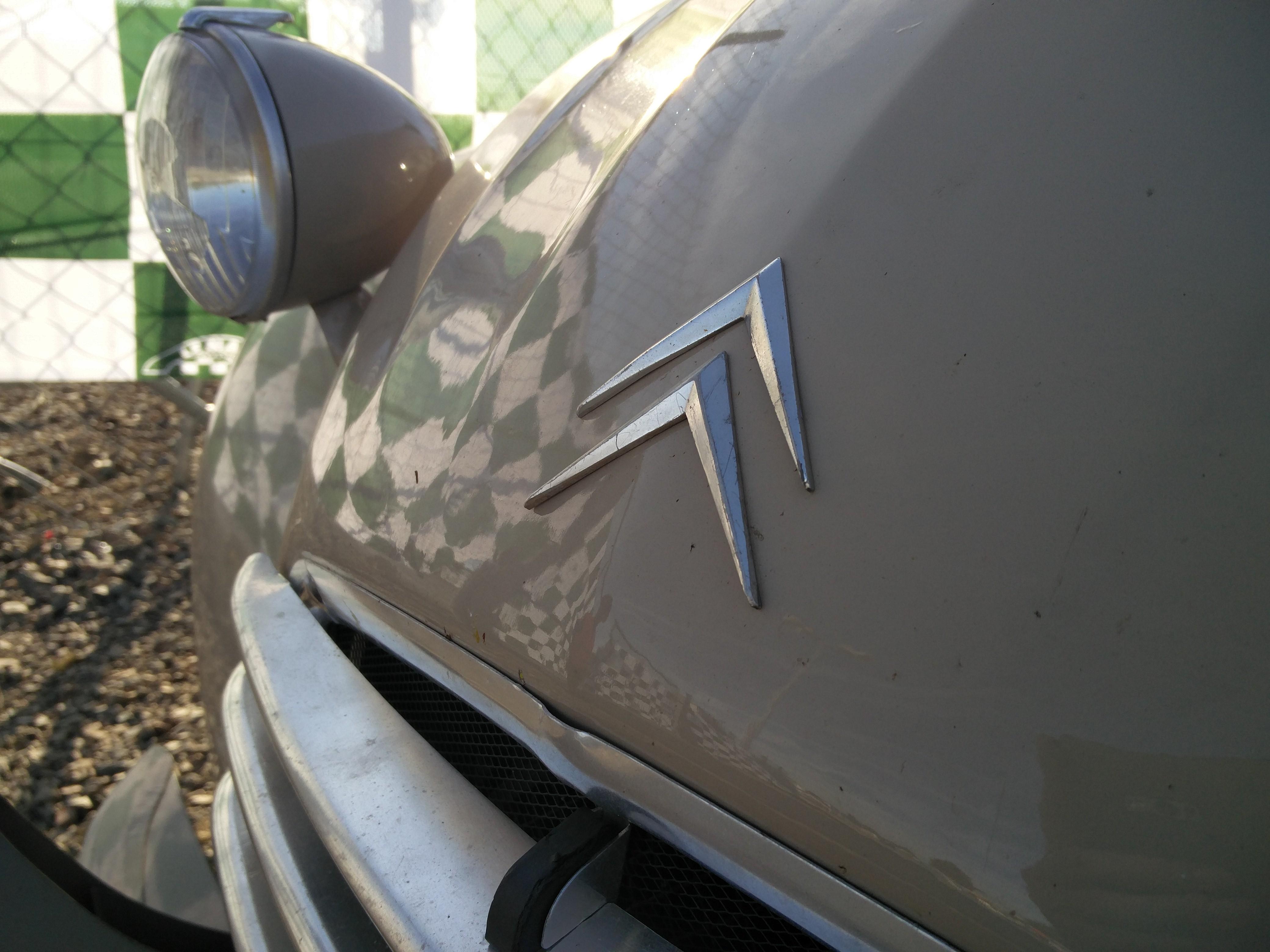
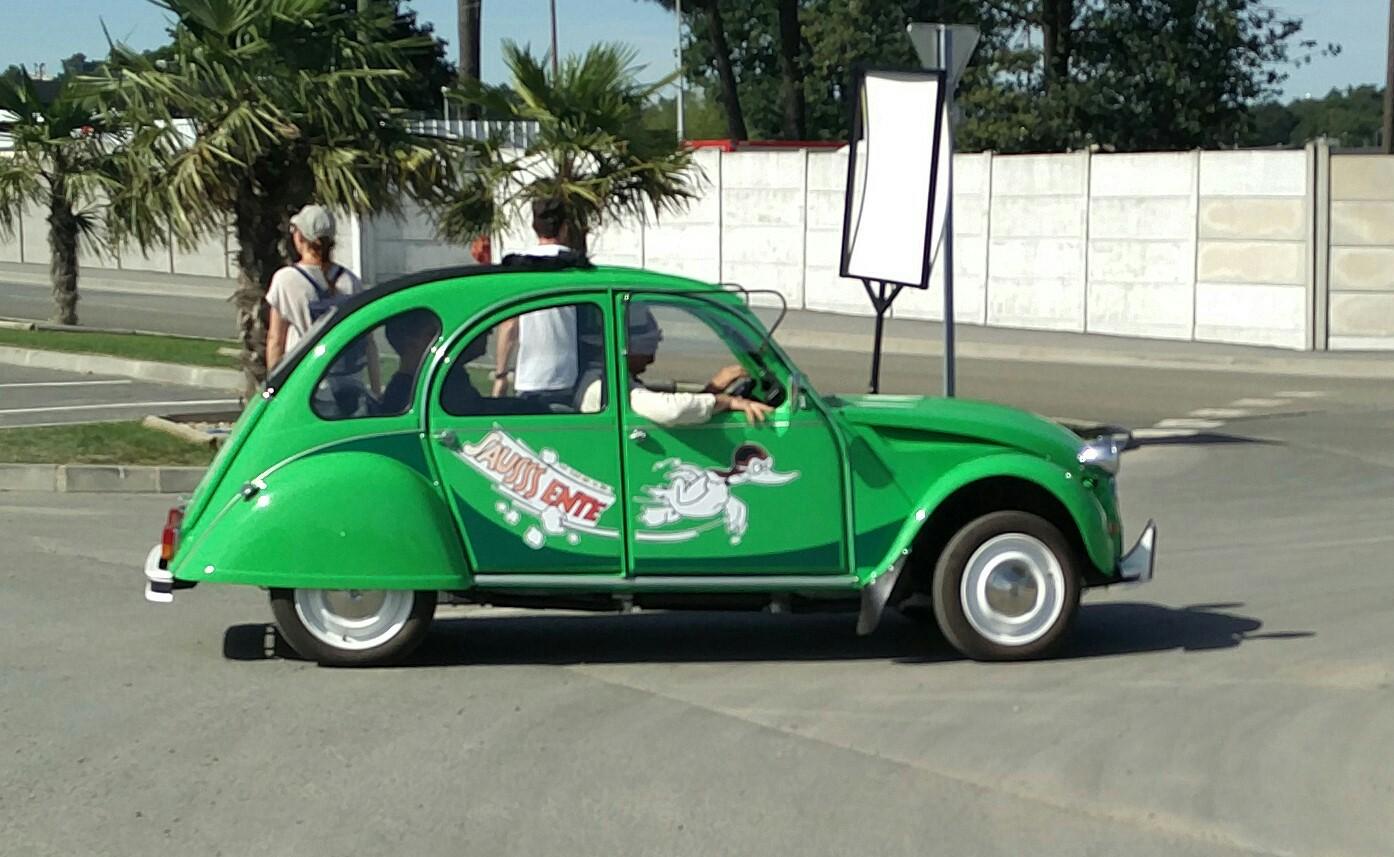
Not a 2CV but the only Citroen in the race – a 1932 Roadster:

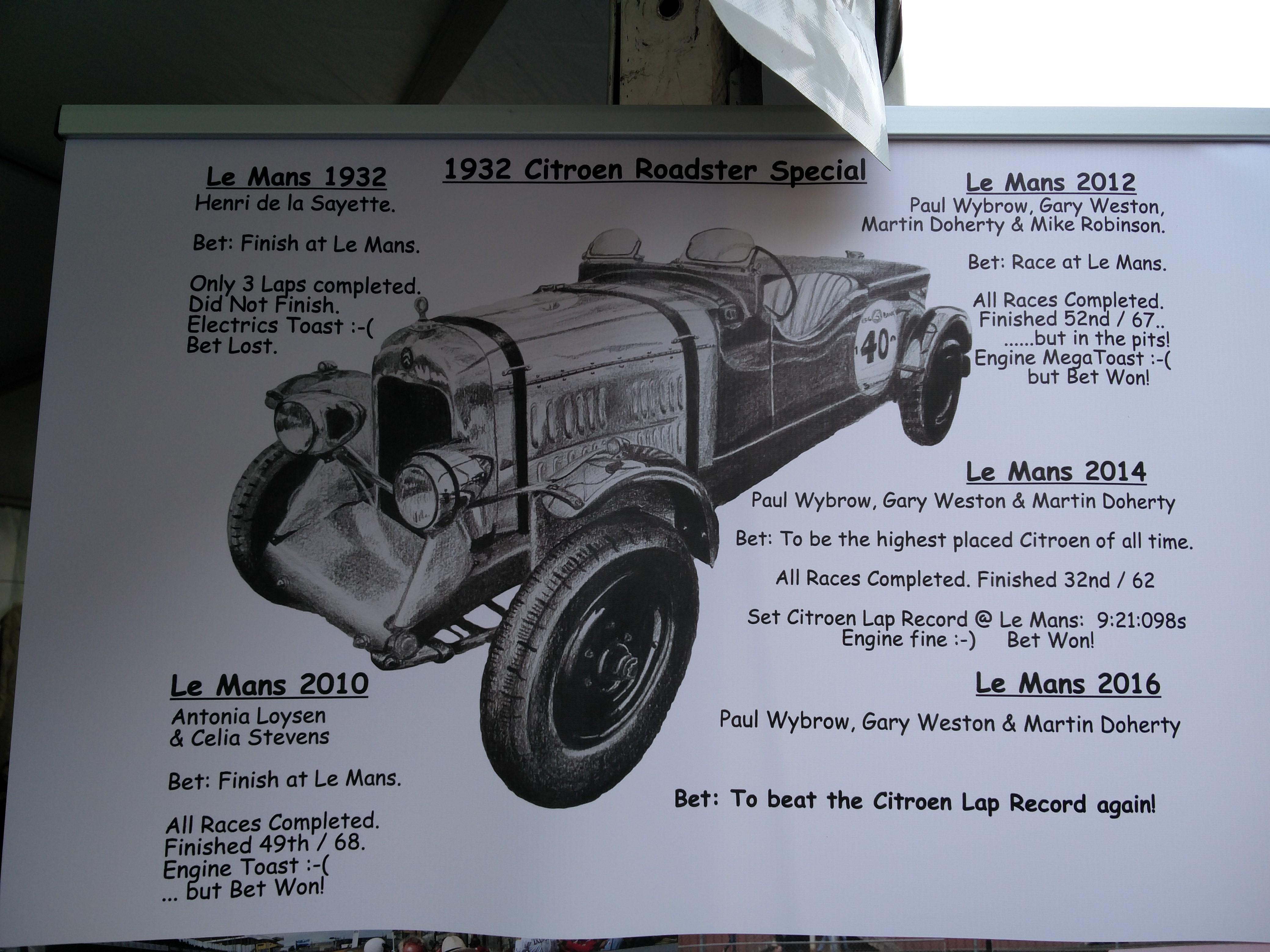
Not quite Citroens but worthy of note to a 2CV owner, there were some DB sports cars with Panhard flat twin air-cooled engines.
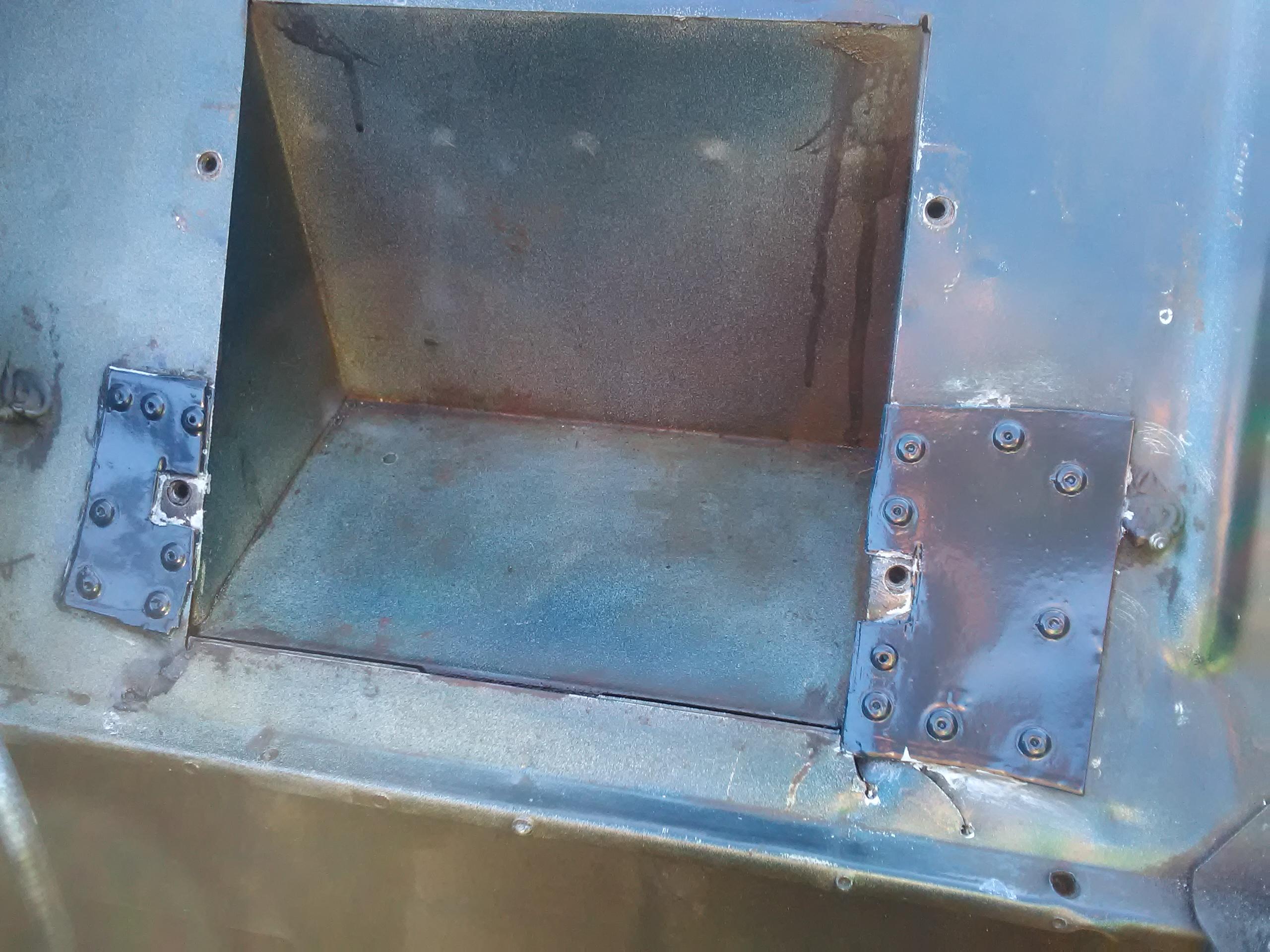
The way the load of the battery is transmitted through the bulkhead puts stress into parts of thin metal that can’t really handle it.
At some point in the past someone had applied some repair panels to the bulkhead round the lower mounting points. These were untreated steel that had been liberally pop-rivited and had inevitably picked up surface rust.

Given the number of rivets, removing the panels isn’t really practical so the next best option is to clean them up and paint them.
Usual techniques apply here: remove as much of the surface rust as practical, treat with rust remedy, mask up, etch prime, prime and top coat.
This is another case where Citroen’s legendary build quality shows up. I’ve painted the patch panels with the correct Blue Nuit paint used on the body but this section of the bulkhead got little more than a cursory blow over at the factory – certainly not enough to cover the undercoat!

Also visible here is one of the cracks that had formed on the lower edges of the battery box. I’ve drilled these out to stop them spreading any further and treated them with Waxoyl to keep the tin worm at bay.